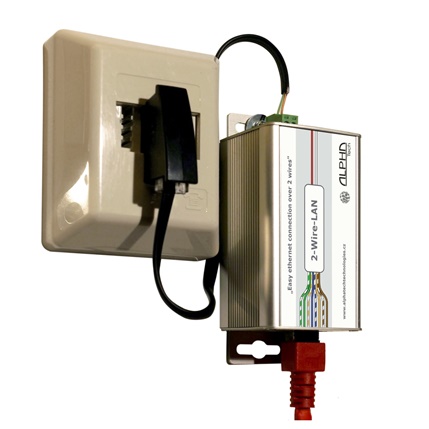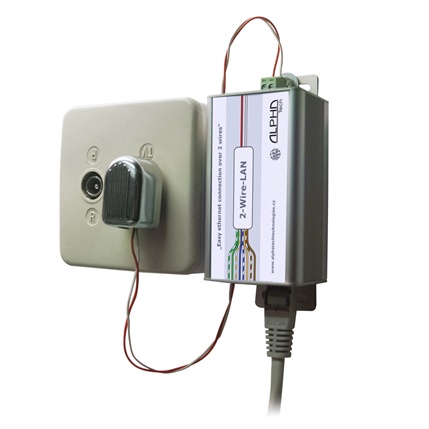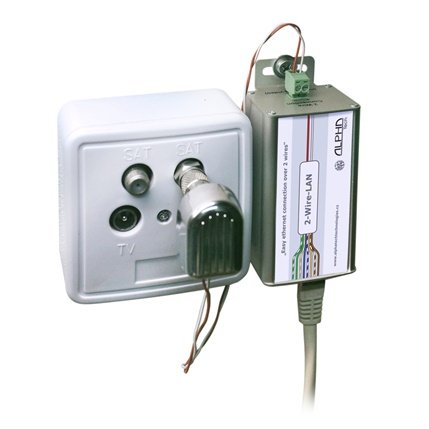Simple two-wire LAN connection
There is no need to tear open your walls and bore holes to lay LAN cables in your building. Solve the problem with the existing lines:

Here is the device, elegantly connected with a phone cable

In this example, the device is connected to a TV outlet

Here the device is connected to the SAT outlet with an adapter
It doesn’t matter what kind of wires are available: The only requirement is that the wires aren’t in use:
because your phone is portable now and the old line is no longer in use
because your antenna cable from the cellar has given way to a satellite dish
because you simply aren’t using your speaker cable any more
Even a power cable can be used if it is no longer in operation. Read more on our page about power cables.
In principle, the two-wire LAN system acts as a power line system. The difference is that we aren’t sharing the line with 230 volt current and all devices get their power from this line.
Instead, it is a dedicated line for the system, which has the corresponding advantages:
Obtain power from the electrical devices
on a dedicated, continuous line. Not intercepted by electricity meters, FI switch/fuses
Not only will the system transform your two wires into a LAN line: it will also supply the destination device with standardized current (PoE - power over ethernet) to power your IP camera, IP phone, PoE switch, IP bell, or other PoE devices.
The PoE camera pulls its power from the power supply unit at the other end of the two-wire line. So there’s no need for an extra power outlet to supply the camera.
Thanks to CSMA/CA and TDMA, up to four clients can be connected to one base device. Simply for LAN there or to have LAN and PoE. The devices do not differ. Any device can be a base device.